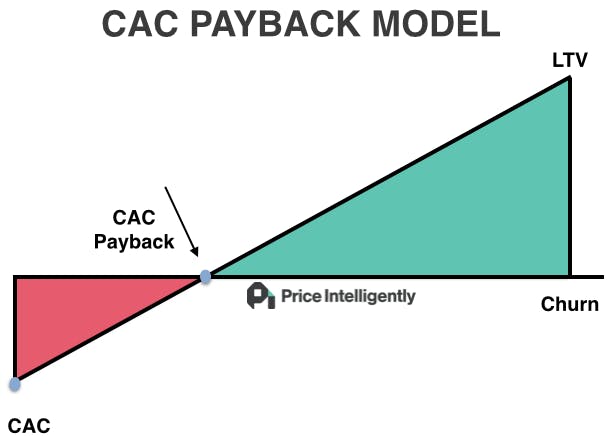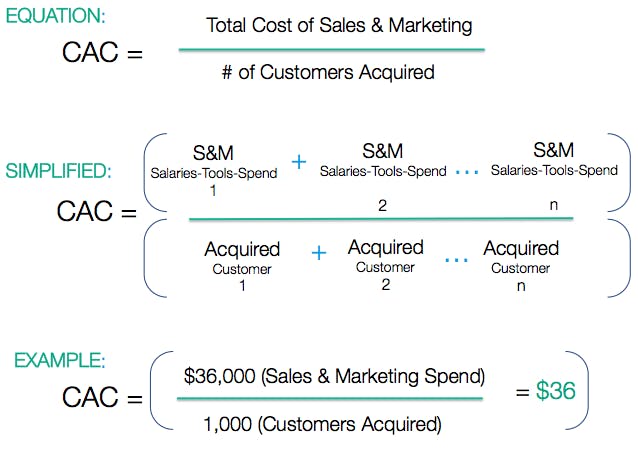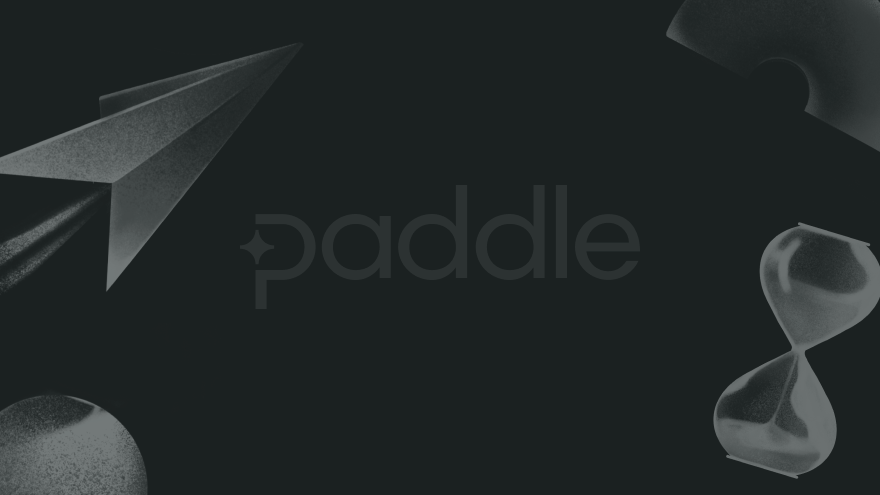Customer acquisition cost (CAC) can be a crushing aspect of your SaaS metrics and lead to failure. Keep CAC:LTV balanced and optimize sales and marketing spending. Here's how to stay on top of it.
When you’re starting your SaaS company, it can be tempting to get customers any way you can--regardless of the cost, time, and energy. However, suppose you plan on running a successful and profitable company. You will need to balance the total cost of sales and marketing efforts required to acquire a customer or your customer acquisition cost. Whether you're promoting your service through content marketing, paid ads, or marketers in your affiliate program, the same principle applies.
If you’re too cautious about your CAC, you will likely be missing out on potential customers and future revenue. Yet, if you spend too freely, you won’t be profitable and will likely end up in the Deadpool.
The challenge of CAC is: Spending the right amount to drive new customers to your service without jeopardizing the customer lifetime value (LTV) and revenue from that customer. This is known as the LTV/CAC ratio, and it's the "god metric" of many successful SaaS companies.
Successful SaaS businesses calculate CAC correctly and use that information to quantify and optimize their marketing funnel, and understand and master the balanced relationship that CAC has with LTV. Let's look at why CAC is important, how to calculate it, and ways you can make your acquisition cost work efficiently to ensure that your SaaS business is among the successful elite.
Here is a video that explains CAC Payback and important benchmarks, originally created for Paddle Studios:

What is customer acquisition cost?
Customer acquisition cost is the amount of money a business spends to get a customer to purchase its products or services. CAC is an important growth metric for businesses to determine customer profitability and sales efficiency.
Customers are costly - not managing CAC is like descending from the face of Yosemite without a harness.
If you have a successful business model your CAC will be sufficiently lower than LTV. If your CAC is higher than LTV right now, don’t panic. CAC is a seesaw that may experience some ups and downs. With the information and steps we are about to show you, you can get your SaaS business on the right end of the seesaw.
How to calculate customer acquisition cost
To calculate customer acquisition cost, you can use a standard CAC formula and divide the total cost of acquiring customers (cost of sales and marketing) over a given period by the total number of customers acquired over that period of time.
Customer acquisition cost formula:
The formula for CAC calculation is:
CAC = (total cost of sales and marketing) / (# of customers acquired)
For example, if you spend $36,000 to acquire 1000 customers, your CAC is $36.
CAC = ($36,000 spent) / (1000 customers) = $36 per customer

What to include in a CAC calculation?
CAC is comprised of two main metrics - all sales and marketing expenses required to gain customers and the number of customers acquired. That’s it.
Sales and marketing expenses
Total sales and marketing expenses usually involve three things: salaries, tools, and spend. Everything in those respective verticals should be included in calculating your CAC. Think of it this way - anything on your P&L that is contributing to the acquisition of new customers should be included. Remember you're trying to optimize your profitability, so you don't want to disclude things that would be hiding flaws in your acquisition strategy or include things that well mask how profitable you truly may be in your acquisition.
New customers acquired
This is a key point: Only include new customers you have acquired. This is a bit more hotly contested, because of the inclusion of "Customer Success" in SaaS businesses. Yet, CS focuses on retention, which should be ever-expanding in terms of MRR/ARR. CAC focuses on acquisition in SaaS.
Why is CAC so important to a business?
Customer acquisition cost is a direct reflection of the future success of your SaaS business. Most SaaS companies put forth a lot of time and money before seeing a return on that investment. This metric will begin to matter more and more as time passes, and you begin to add up the months it takes to recover from CAC and actually turn a profit.
Figure 1 depicts the early period of the acquisition process (highlighted in red) where your SaaS business is spending time and money. Then as time passes, your customer starts to pay monthly for your subscription service, and you eventually break even and make your money back on the initial investment. From then on is a magical period (highlighted in green) where you’re rolling in the dough and netting a profit from that customer until they decide to cancel (which is hopefully never).
More specifically (and bluntly), understanding your CAC is important for three key reasons:
1. Optimize your LTV/CAC ratio to 3 or higher
Every quarter you should be managing your LTV/CAC ratio by optimizing sales and marketing output. You constantly need to be optimizing your channels and tactics to ensure you're optimizing this ratio and making that green triangle as large as humanly possible. For a benchmark, you want this number to net out to at least 3, meaning for every dollar you put in your SaaS machine, you're getting 3 out.
2. Determine and optimize your payback period
As soon as you acquire a new paying customer, you instantly have lost money. This means the first thing on the agenda moving forward should be getting back that amount of money you paid upfront as soon as humanly possible. Think of the payback period as the next layer of CAC because it reveals a much more dense look at how your channels and business as a whole are doing from an acquisition front, especially if you're employing a freemium model. Check out this post from HubSpot on how their product team thinks about the payback period.
3. Track and optimize your CAC ratio
Oh yes, CAC goes deeper than simply the CAC to what's known as the CAC ratio. The reason this number is so important (and will be written about in the future) is that the purpose of a business is to generate a margin, not just revenue. As such, the CAC ratio takes gross margin over the costs of customer acquisition and tracks it over time.
How to analyze your customer acquisition cost
SaaS businesses that prioritize CAC, or those with large and complex structures, will want to go deeper in analyzing CAC. By understanding CAC by individual customer types, marketing channels, and product lines, you can identify issues and opportunities and dial-up (or down) activity accordingly. There is almost limitless segmentation you can perform with CAC, and each of these can be calculated using both ‘simple’ and ‘complex’ terms. The most common include:
- Initial CAC: The cost of acquiring a customer for the first time.
- Renewal CAC: The cost of renewing a customer. This can be segmented further by looking at CAC for first-time renewals, second-time renewals, and so on.
- Reactivation CAC: The cost of acquiring a customer that previously churned.
- Market CAC: The cost of acquiring customers in a specific country or region, or by vertical sector.
- Customer CAC: The cost of acquiring customers of a specific age, gender, professional level, or even based on their previous engagement levels with you, to name just a few.
- Product CAC: The cost of acquiring customers for a specific product.
- End Users CAC: The cost of acquiring customers by the number of users their licence affords them. This can be expanded to look more specifically at User Acquisition Cost, where costs are divided by the number of end-users rather than contracted customers. For example:
A business has quarterly acquisition costs of $520,000 and generated 175 new customers. 100 of those new customers bought 10 licences (1,000 users); 50 bought 25 licences (1,250 users); and 25 bought 40 licences (1,000 users).
End user CAC is $520,000/3,3250 users = $160
Four ways you can reduce CAC
Customer acquisition cost is designed to measure and maintain the profitability of your acquisition teams. If your costs to get the customer through the door are higher than your customer lifetime value (CLV, LTV) the business cannot be viable. The best rule of thumb is to be spending 33% or less of your average customer lifetime value.
With that being said, let’s put this knowledge into action today. Here are some ways you can reduce your CAC and optimize for profit.
1. Optimize your sales and marketing funnel
Quantify each step of the process, and understand how many visits lead to leads, how many leads lead to opportunities, and how many opportunities lead to customers. The best way to do this is to apply the Balfour Method of growth process to your funnel, which ensures proper mechanics in your channels.
2. Optimize your pricing strategy
Remember a huge portion of CAC feeds into the recovery period, as well as your CAC ratio. As such, if you optimize your pricing to gain cash upfront to recover your CAC, in the form of mandatory training, integration costs, etc., you can ensure you start making a profit as soon as possible. Check out more on value-based pricing strategy here on our Price Intelligently blog.
3. Strengthen the effectiveness of sales and marketing spend
Take a lean approach to marketing and sales expenses. Put money into channels that have proven returns so that you aren’t wasting any more dollars.
4. Quickly engage new customers and prospects
Cut down the time it takes to get new customers engaged with your product. The quicker product engagement happens per customer the cheaper acquisition cost becomes per customer.
Customer acquisition cost (CAC) FAQs
How to calculate CAC?
A business’ CAC is calculated by dividing all sales and marketing costs by the number of New Customers gained within a specific period. A simple example would be, if Tommy spent $10 to market his lemonade stand and got 10 people to buy his product in 1 week, his cost of acquisition for that week is $1.00.
Why does CAC matter?
CAC is the ratio that represents the return on investment of all sales and marketing efforts relative to new customers gained by implementing them. This makes CAC a useful indicator of the effectiveness of different sales and marketing strategies. CAC is also a key metric used by revenue leaders to gain deeper insight into the drivers of their business model and is particularly relevant for high-growth companies to scale.
How to determine which metrics to include in the CAC?
There are two metrics typically included in the CAC - all sales and marketing costs and Net New Customers acquired. That said, if Customer Success is a significant driver of New Customers for a business, some revenue leaders might include this in their CAC calculation.
What is a good CAC?
A good customer acquisition cost (CAC) depends largely on the type of industry and the strategies implemented by a business to get new customers. SaaS businesses usually compare CAC to a customer’s lifetime value (LTV) as an indicator of business health. The ideal CAC:LTV ratio is widely accepted to be 3:1.
Paddle's automated billing system helps businesses with their SaaS billing needs. Find out how our merchant of record model takes care of tax, compliance and payments so you can focus on growing.




